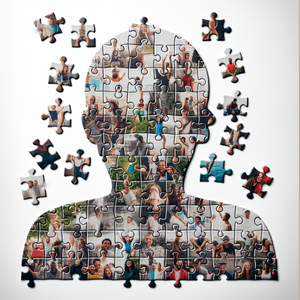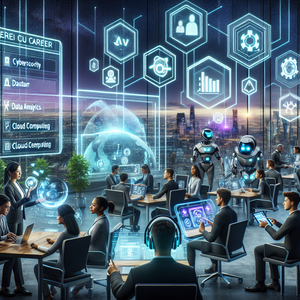The Future of Site Reliability Engineering: Trends and Predictions

One of the most significant trends influencing the future of SRE is the rise of automation. Automation tools help streamline workflows, reduce manual intervention, and minimize human error. According to a recent study by Gartner, organizations that adopt automation will see a 20-30% improvement in operational efficiency. For example, tools like Kubernetes for container orchestration and Terraform for infrastructure as code are becoming standard in many organizations. Kubernetes automates the deployment, scaling, and management of containerized applications, while Terraform allows teams to define and provide data center infrastructure. These technologies not only help in automating deployments but also in managing scaling and load balancing. As SREs increasingly leverage automation, they can focus more on strategic tasks, such as improving system design and reliability, rather than getting bogged down in repetitive operational tasks.
AI Integration
Artificial Intelligence is poised to revolutionize Site Reliability Engineering. AI-driven tools can analyze vast amounts of system data to identify patterns, predict failures, and recommend optimizations. Companies like Google are already implementing AI in their SRE practices to enhance decision-making processes. For instance, Google’s SRE team utilizes machine learning models to predict when a service is likely to experience issues based on historical data. This proactive approach allows teams to address potential outages before they affect users, thereby enhancing overall system reliability. As AI continues to evolve, SREs will need to adapt to new tools and methodologies that leverage these capabilities. The integration of AI in monitoring systems means that SREs can prioritize issues that need immediate attention, thus optimizing their time and resources.
Growing Importance of Cybersecurity
With cyber threats on the rise, the integration of cybersecurity practices into Site Reliability Engineering is becoming increasingly vital. SREs must now consider security as a core component of system reliability. This shift is underscored by the emergence of concepts such as DevSecOps, where security is integrated into the development and operations processes from the outset. Experts predict that SREs will take on a more prominent role in ensuring system security, collaborating closely with security teams to implement best practices and respond to incidents swiftly. For example, incorporating automated security checks into Continuous Integration/Continuous Deployment (CI/CD) pipelines can help detect vulnerabilities early in the development cycle, reducing the risk of breaches and enhancing overall system integrity. This proactive approach to security not only protects the systems but also builds user trust and confidence.
Emphasis on Observability
Observability is critical for understanding the health and performance of complex systems. As SREs face increasingly intricate architectures, the need for robust observability tools will grow. These tools allow teams to gain deeper insights into system behavior, enabling faster identification and resolution of issues. The emergence of technologies like OpenTelemetry and distributed tracing is transforming how SREs monitor and analyze systems. OpenTelemetry provides a framework for collecting telemetry data from applications, while distributed tracing allows SREs to track requests across microservices, identifying bottlenecks and failures. By providing comprehensive visibility into application performance, SREs can make data-driven decisions that enhance reliability and efficiency. As the observability landscape expands, SREs will need to stay current with the latest tools and practices to maintain system health.
The future of Site Reliability Engineering is poised for significant transformation driven by automation, AI, cybersecurity, and observability. As these trends continue to shape the profession, SREs will need to adapt and evolve, embracing new technologies and methodologies that enhance their ability to deliver reliable systems. By staying abreast of these developments, SREs can ensure they remain indispensable to their organizations, playing a crucial role in the ever-evolving digital landscape. The next decade will undoubtedly see SREs at the forefront of innovation, driving improvements in system reliability and performance across industries.
Site Reliability Engineer (SRE)
Google, Netflix, Amazon
Core Responsibilities
Design and implement monitoring and alerting systems to ensure system health and performance.
Develop automation scripts for deployment and incident response to reduce manual errors.
Collaborate with software engineering teams to improve application reliability and performance.
Required Skills
Proficiency in programming languages such as Python, Go, or Java.
Experience with cloud platforms (AWS, GCP, Azure) and container orchestration (Kubernetes).
Strong understanding of CI/CD processes and DevOps practices.
DevSecOps Engineer
IBM, Cisco, Red Hat
Core Responsibilities
Integrate security practices into the DevOps pipeline to ensure secure software development.
Conduct security assessments and audits of applications and infrastructure.
Implement automated security testing and monitoring tools.
Required Skills
Deep knowledge of security protocols, compliance standards, and threat modeling.
Familiarity with tools like Jenkins, GitLab CI, and security scanning tools (e.g., Snyk).
Experience with configuration management (Ansible, Chef, Puppet).
Site Reliability Architect
Microsoft, Facebook, LinkedIn
Core Responsibilities
Lead the design of scalable and reliable system architectures across multiple platforms.
Establish best practices for reliability engineering and incident management.
Mentor junior SREs and contribute to team knowledge sharing.
Required Skills
Extensive experience in system architecture and cloud infrastructure design.
Strong analytical skills and experience with performance tuning and capacity planning.
Familiarity with observability tools (e.g., Prometheus, Grafana).
Cloud Infrastructure Engineer
Oracle, DigitalOcean, Rackspace
Core Responsibilities
Build and maintain cloud infrastructure to support application development and deployment.
Implement and optimize automation for infrastructure as code (IaC) using tools like Terraform or CloudFormation.
Monitor cloud resources for performance, cost, and availability.
Required Skills
Proficient with cloud technologies (AWS, GCP, Azure) and networking fundamentals.
Experience with scripting languages (Bash, Python) for automation tasks.
Understanding of disaster recovery and high availability strategies.
Observability Engineer
Datadog, Splunk, New Relic
Core Responsibilities
Design and implement observability solutions to enhance system monitoring and visibility.
Analyze telemetry data to identify performance bottlenecks and system failures.
Collaborate with development teams to integrate observability into application design.
Required Skills
Experience with observability tools such as OpenTelemetry, Jaeger, and ELK Stack.
Strong skills in data analysis and visualization techniques.
Knowledge of microservices architecture and distributed systems.


